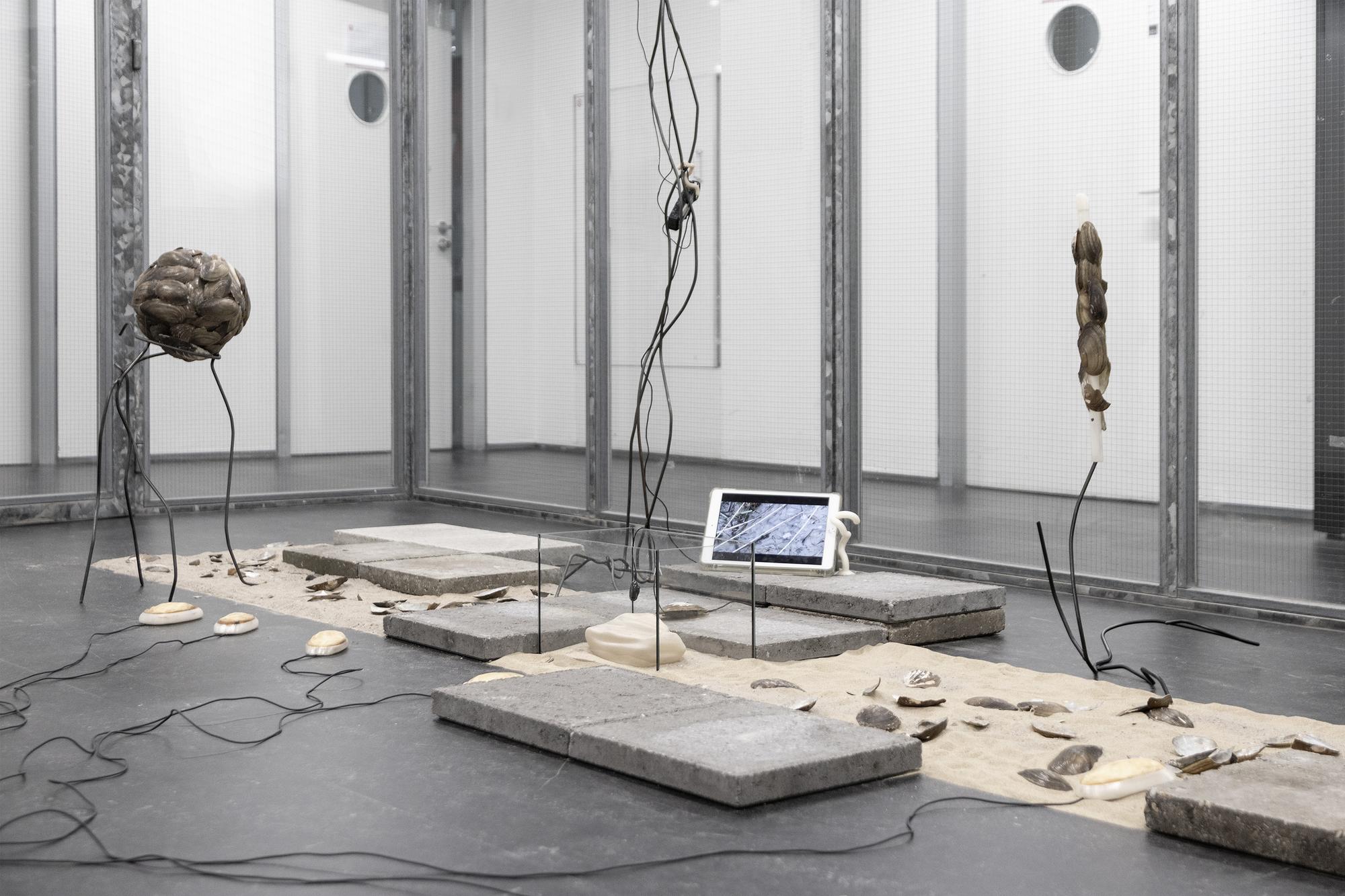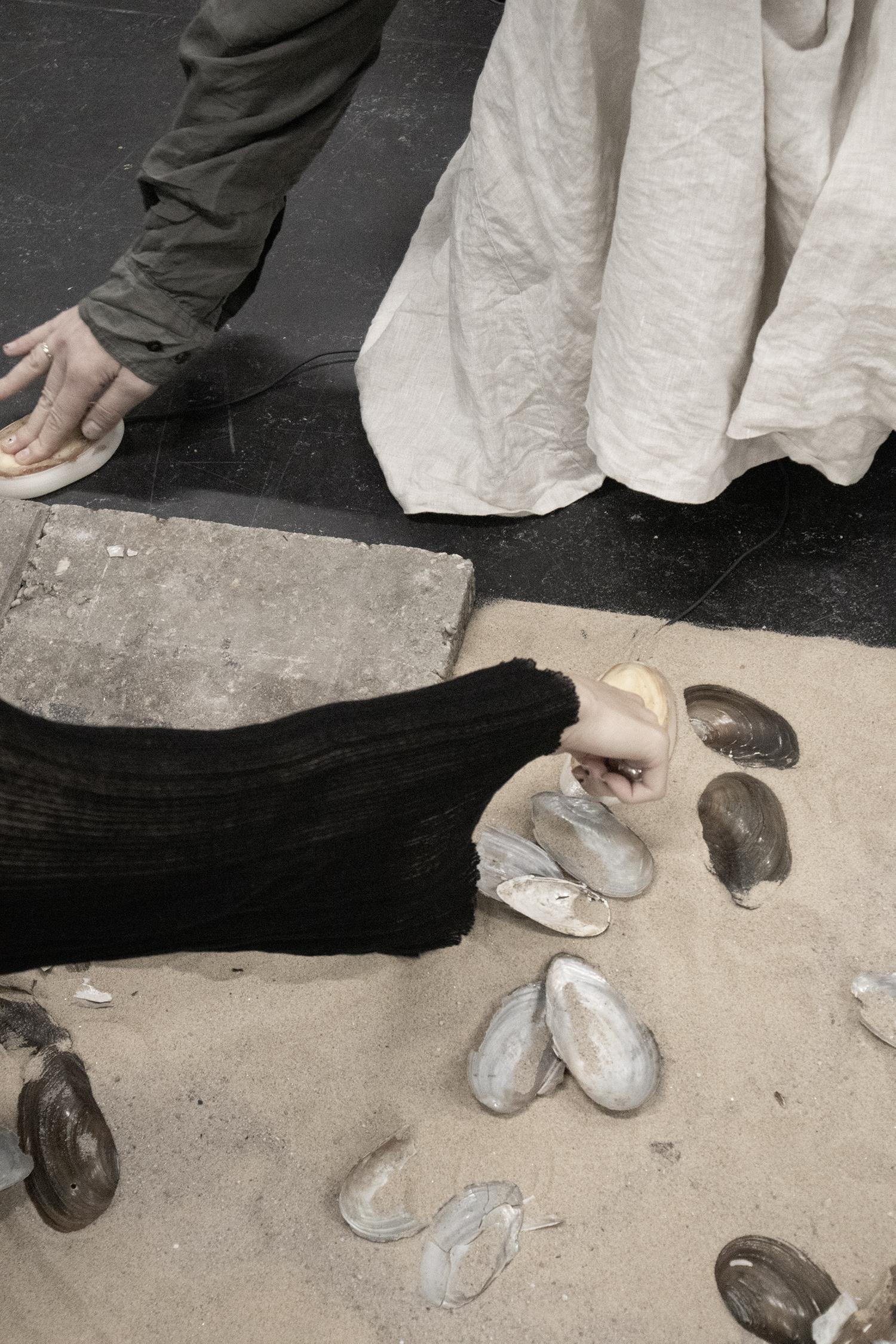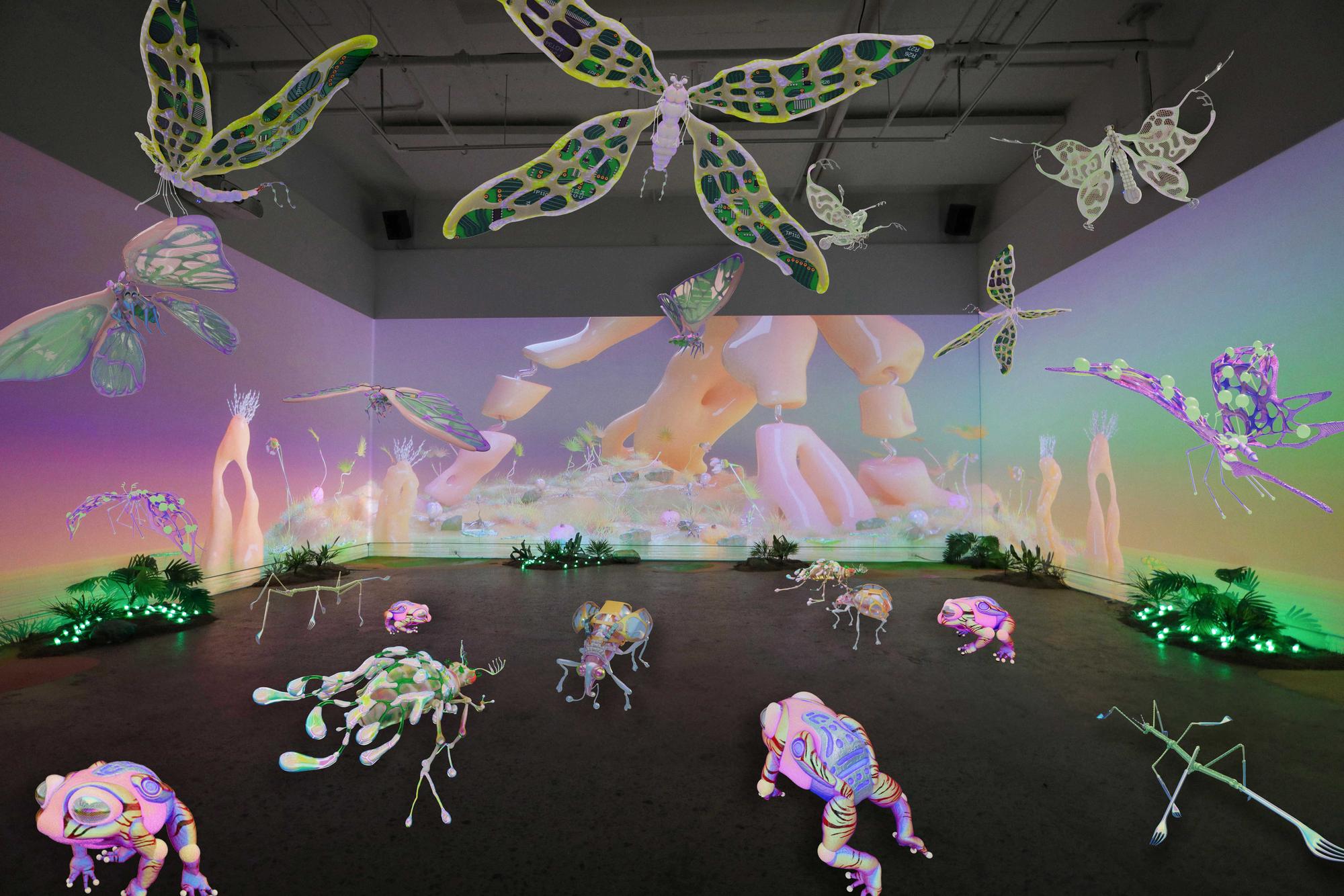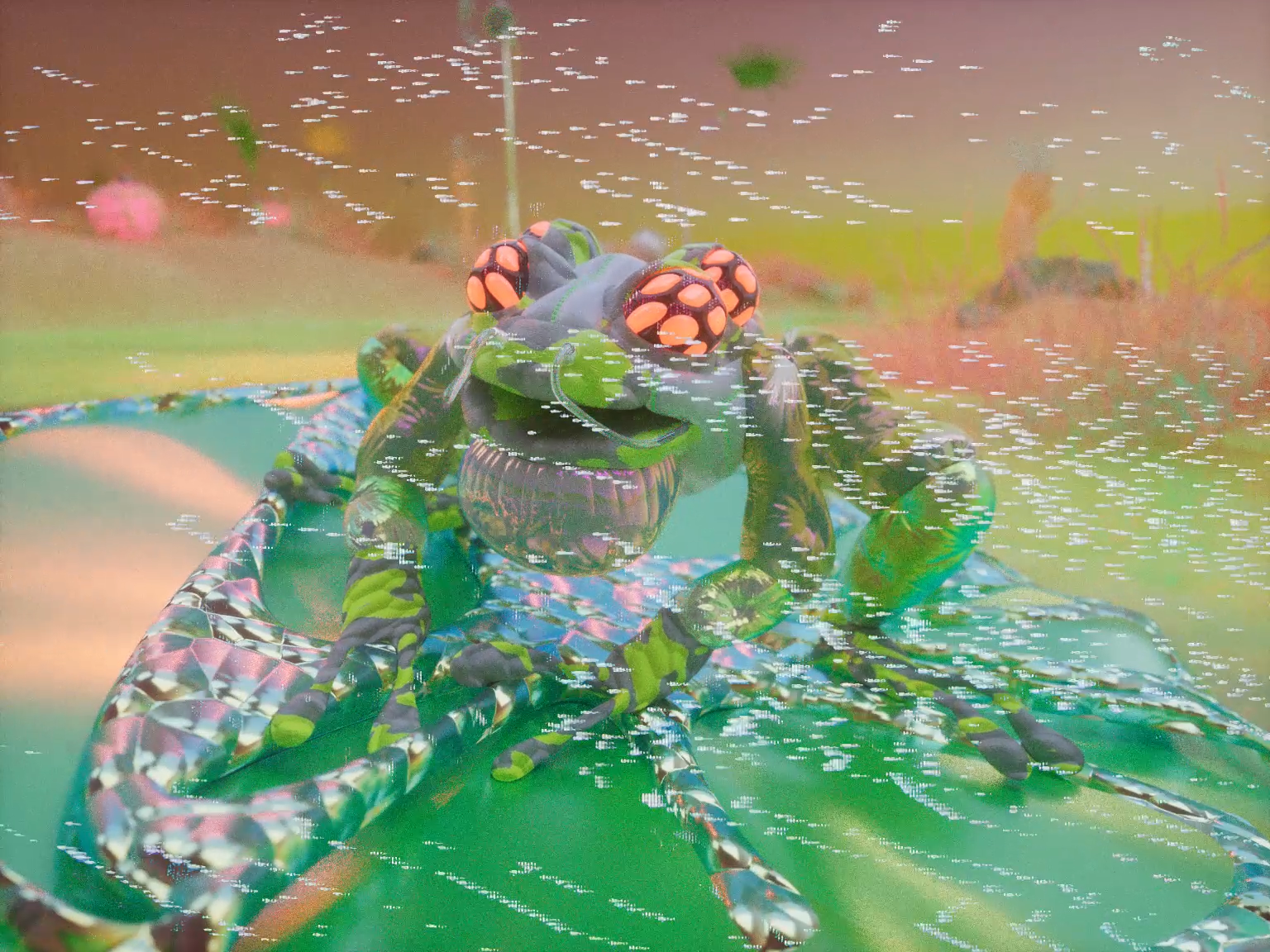The speculative, research-based interactive installation emerged from a study of water conditions in the De Biesbosch National Park in the Netherlands, focusing on the effects of noise pollution and constant channel regulation. These factors greatly affect freshwater mussels, which depend on clean, oxygenated water and stable sandy beds. Research shows they are highly sensitive to anthropogenic noise, with low-frequency sounds causing stress, although they respond positively to natural sounds.
The installation—comprising a collection of sounds, including recordings of both natural environments and noise pollution, supplemented with a folk song—serves as a kind of poetic, ASMR-inspired concert for freshwater mussels. Although mussels lack a sense of hearing, they rely on other sensitivities to perceive vibration and sound. While we cannot escape the human perspective of perception, we can attempt to engage with their condition and perhaps connect with this species in the future.
Hydrophone recordings of ferry noise and crushed mussel shells, combined with a sung folk lullaby, create a poetic, ASMR-like soundscape. The sound is played through waterproof speakers embedded in 3D-printed boxes made from biodegradable filament containing ground mussel shells. Visitors interact with the work via custom sensory buttons cast in silicone from shells. These buttons trigger subtle changes in the sound environment via Arduino, enabling an intimate, tactile connection with the piece. A hydrophone placed in water invites speculative listening from the mussels’ perspective, emphasizing the entangled experience of sound, touch, and submerged life.




